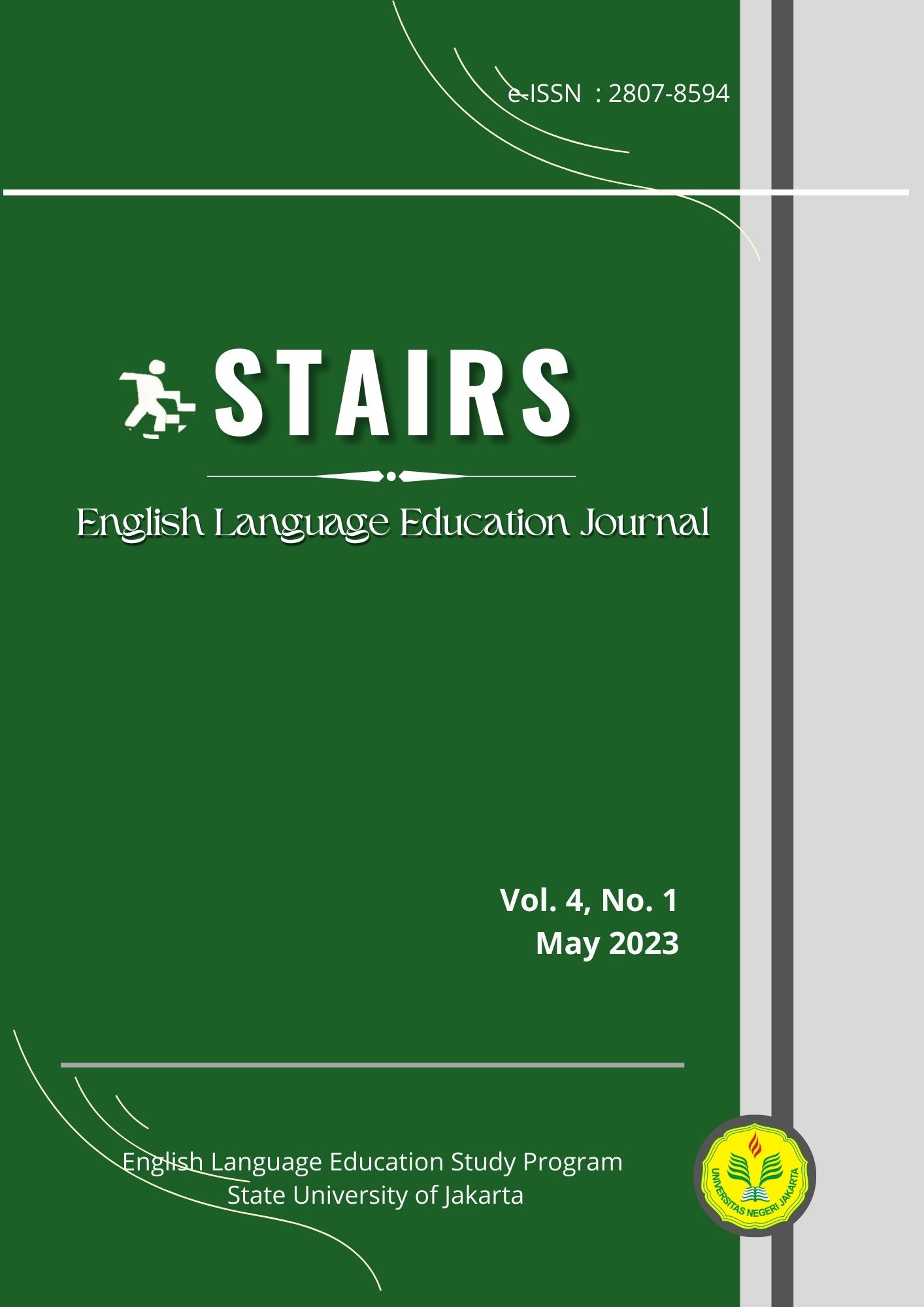Cultural Contents in MyEnglishStep Digital Learning Materials for Junior High School Students
DOI:
https://doi.org/10.21009/stairs.4.1.1Keywords:
Cultural Content, Digital Learning Materials, Cultural Categories, Cultural DimensionsAbstract
The present research aimed to analyze the cultural contents available in digital learning materials for Junior High School Students called myenglishstep.com. The data were analyzed using qualitative content analysis under two frameworks, particularly the cultural categories framework by Chao (2011) and the framework of the cultural dimensions by Moran (2001). The results revealed 1.472 cultural contents, covering all five cultural categories: Source Culture, Target Culture, International Culture, Intercultural Interaction, and Universality across Cultures. Further, the cultural contents are also represented through Cultural Dimensions, namely Products Dimension, Practices Dimension, Perspectives Dimension, Communities Dimension, and Person Dimension. The cultural contents mainly appeared as much as 1160 times in the Universality across Cultures and were presented through products created and invented by the social communities approximately 623 times. These results, to some extent, show that material developers are aware of the importance of cultural content to cater to diversity in Indonesia.
References
Angelina, S., Mayuni, I., & Agustina, I. W. (2022). Cultural Contents in Digital Authentic Greeting Cards as English Teaching Materials for Junior High Schools. Stairs: English Language Education Journal, 3(1), 19-28.
Chao, T. (2011). The hidden curriculum of cultural content in internationally published ELT textbooks: A closer look at New American inside out. The Journal of Asia TEFL, 8(2), 189-210.
Chew, P. G. L. (2013). Emergent lingua francas and world orders: The politics and place of English as a world language. Routledge.
Giyatmi, G. (2021). Cultural Learning In Teaching English. In English Language and Literature International Conference (ELLiC) Proceedings (Vol. 3, pp. 186-195).
Gonzalez-Vera, P. (2016). The e-generation: the use of technology for foreign language learning. New perspectives on teaching and working with languages in the digital era, 51.
KEMDIKBUD. (2020). Kompetensi Inti dan Kompetensi Dasar pada Kurikulum Darurat (dalam Kondisi Khusus) untuk PAUD, Dikdas, dan Dismen Berbentuk SMA. Retrieved August 14, 2022, from https://bersamahadapikorona.kemdikbud.go.id
Krippendorff, K. (2004). Content Analysis an Introduction to Its Methodology. California: SAGE Publications.
Masturah, N. A. (2019). Cultural Content Analysis in English Textbook “English on Target” for SMA/MA Grade X. [Bachelor’s thesis, Universitas Sebelas Maret].
Mayuni, I., Leiliyanti, E., Palupi, T. M., & Agustina, I. W. (2021). Pengembangan Materi Pembelajaran Bahasa Inggris Berbasis Literasi Digital Untuk Siswa Sekolah Menengah Pertama.
McKay, S. L. (2002). Teaching English as an international language: Rethinking goals and perspectives. New York: Oxford University Press.
Moran, P. (2001). Teaching culture: perspective in practice. Boston, MA: Heinle & Heinle.
My English Step. (2021). Pengantar Pembelajaran. Retrieved March 10, 2022, from https://www.myenglishstep.com/home
PUSDIKLAT KEMDIKBUD. (2020). Surat Edaran Mendikbud No 4 Tahun 2020 Tentang Pelaksanaan Kebijakan Pendidikan Dalam Masa Darurat Penyebaran Corona Virus Disease (COVID-19). Retrieved March 8, 2022, from https://pusdiklat.kemdikbud.go.id/surat-edaran-mendikbud-no-4-tahun-2020-tentang-pelaksanaan-kebijakan-pendidikan-dalam-masa-darurat-penyebaran-corona-virus-disease-covid-1-9/
Rahmawati, D. S. A. (2020). Culture Representation in English Textbook: Content Analysis of Textbook Bahasa Inggris For Grade X Senior High School (Bachelor’s thesis, IAIN Purwokerto, 2020).
Setiadi, R. M. A. (2020). Cultural Contents Of A Junior High School English Textbook (Master’s thesis, Universitas Pendidikan Indonesia).
UNICEF. (2021). Situational analysis on digital learning landscape in Indonesia. Retrieved March 12, 2022, from https://www.unicef.org/indonesia/media/8766/file/Digital%20Learning%20Landscape%20in%20Indonesia.pdf



